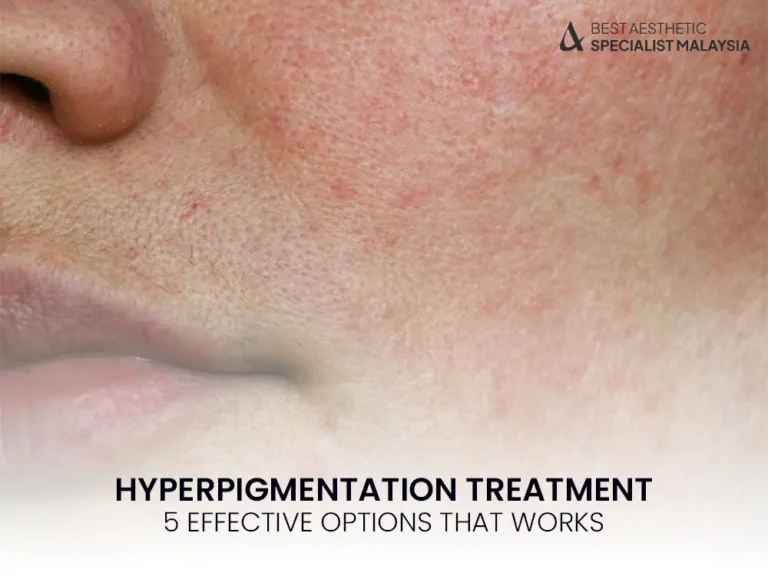Hyperpigmentation Treatment Option
When looking for the best hyperpigmentation treatment, it’s essential to choose a hyperpigmentation treatment that suits your skin type. The right hyperpigmentation treatment can vary depending on the severity of your pigmentation. Whether you need a hyperpigmentation treatment for dark spots, a hyperpigmentation treatment for melasma, or an overall hyperpigmentation treatment solution, the goal is to find a hyperpigmentation treatment that delivers results. Always consult a dermatologist to identify the most effective hyperpigmentation treatment tailored to your needs.
Hyperpigmentation Treatment—those dark spots or patches that seem to appear out of nowhere—can be frustrating. Whether caused by sun exposure, acne scars, or hormonal changes, hyperpigmentation affects people of all skin tones and types. The good news? There’s a variety of hyperpigmentation treatment options that can help fade those spots and even out your skin tone.
Let’s explore the top 5 dermatologist-approved treatments that actually work.
Understanding Hyperpigmentation

Hyperpigmentation refers to areas of skin that become darker than the surrounding skin due to excess melanin production. This condition can be triggered by a number of factors:
Sun exposure: UV rays stimulate melanin production.
Inflammation: Acne, eczema, or skin injuries can leave behind dark marks.
Hormonal changes: Conditions like melasma are linked to hormonal fluctuations, especially during pregnancy or due to birth control use.
While not usually harmful, many seek treatment for cosmetic reasons.
Top 5 Hyperpigmentation Treatment Options
1. Topical Treatments with Active Ingredients
Topical creams and serums are often the first line of defense against hyperpigmentation. Dermatologists recommend the following ingredients for effective results:
Hydroquinone: A powerful lightening agent that decreases melanin production. Often used for short periods under professional supervision.
Azelaic acid: Great for post-acne marks and safe for sensitive skin.
Retinoids (Retinol, Tretinoin): Promote cell turnover and help lighten pigmentation over time.
Kojic acid and Licorice extract: Natural ingredients with skin-brightening effects.
Best for: Mild to moderate pigmentation and maintenance therapy.
2. Chemical Peels
Chemical peels work by exfoliating the outer layers of skin, encouraging new, evenly pigmented skin to emerge.
Light Peels: Contain alpha hydroxy acids (AHAs) like glycolic or lactic acid. Minimal downtime.
Medium Peels: Use trichloroacetic acid (TCA) for deeper penetration.
Deep Peels: More aggressive and may require significant recovery, used in severe cases.
Best for: Sunspots, melasma, and stubborn dark patches.
Note: Always have peels done by trained professionals, especially if you have darker skin tones.
3. Laser Therapy
Laser treatments use targeted light beams to break down melanin.
Intense Pulsed Light (IPL): Effective for superficial pigmentation.
Q-switched lasers: Target deeper pigment and tattoo-like discolorations.
Fractional lasers: Penetrate deeper layers, helping with texture and tone simultaneously.
Best for: Deep or widespread pigmentation issues. Requires multiple sessions and professional guidance.
4. Microdermabrasion and Dermabrasion
These are physical exfoliation techniques used to improve skin tone and texture.
Microdermabrasion: A non-invasive method that gently removes dead skin cells.
Dermabrasion: A more intense treatment that sands the skin to remove the upper layers.
Best for: Age spots and post-acne marks. Results vary based on depth and skin type.
Recovery time: Microdermabrasion has no downtime, while dermabrasion may require days to weeks.
5. Natural Remedies and Over-the-Counter (OTC) Options
For those preferring a gentler or budget-friendly approach, OTC products and natural remedies can help maintain results.
Vitamin C serums: Brighten skin and reduce melanin formation.
Niacinamide: Reduces inflammation and helps fade discoloration.
Licorice root extract: A safe, gentle lightener often used in natural skincare.
Best for: Maintenance, prevention, and early-stage pigmentation.
Choosing the Right Hyperpigmentation Treatment
Not all treatments are suitable for everyone. When choosing a hyperpigmentation treatment, consider:
Skin type and tone: Darker skin may be more prone to post-inflammatory hyperpigmentation from aggressive treatments.
Severity of pigmentation: Deeper discoloration may need laser or chemical peels.
Budget and commitment: Some treatments require multiple sessions or continuous use.
Pro Tip: Always consult a dermatologist to determine the best course of action for your skin.
Frequently Asked Questions
1. What’s the fastest way to treat hyperpigmentation?
Laser treatments and prescription-strength topical agents offer the quickest visible results, but they must be used carefully to avoid side effects.
2. Are home remedies effective for hyperpigmentation?
While natural ingredients like vitamin C and niacinamide can help, they are more effective for prevention and mild pigmentation rather than deep or long-standing spots.
3. Can hyperpigmentation go away permanently?
Some cases can be permanently treated, but recurrence is possible, especially if sun protection is neglected.
4. Is laser treatment safe for dark skin tones?
Yes, but it’s essential to choose the right type of laser and a provider experienced with darker skin to avoid burns or increased pigmentation.
5. How long do results from treatments last?
Results vary, but maintaining a good skincare routine—including sun protection—is key to long-lasting effects.
Hyperpigmentation doesn’t have to be permanent. With the right combination of treatments and professional guidance, clearer, more even-toned skin is within reach.
